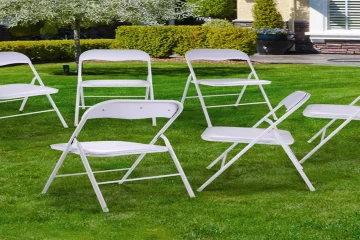Sectional couches give your house a feeling of home and make your offices more comfortable. Whether you are having a party or just have your friends invited over, these couches are always there for you.
While you snuggle up with your favorite snacks on your couch, don’t forget to take a day out and clean them so that your sectional couch never gets old! Now cleaning a couch sounds like a back-breaking task at first, but doing it step-by-step will help you clean your sectional couch easily.
So, in this article, we will drop the most useful tips for you on how to clean a sectional couch to enhance their life and quality. These techniques are also applicable for reclining versions of sectional sofas. So if you own a reclining one, don’t worry. Just follow along the tips.
There is more than one way!
Just like doing any other thing, there is not a single process on how to clean a sectional couch, and there are several ways you can take according to what suits you the best. Below we will be discussing the most common ones amongst them, which can help you get the best results. So, keep reading and decide what you want.
Periodic Cleaning
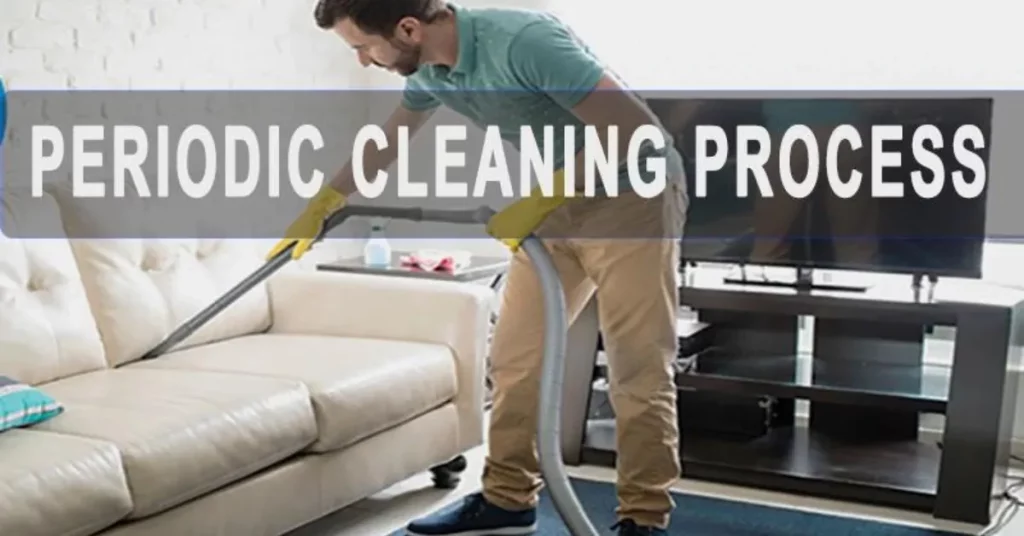
Perioding cleaning is one of the most common and easiest ways you can choose to keep your sectional couch clean. While cleaning, don’t forget to clean your couch covers. Because, all of your couches might be squeaky clean, but if your couch covers are dirty then it ruins the whole impression. In addition to couches, this approach can also be used with sectional sofa cleaning, as this is a rather general method.
So, how do you do it?
Well, for starters, you just need to have a simple vacuum cleaner with a long and narrow attachment, which will help you in cleaning the dust stuck in the corners.
You can adjust yourself to a routine, and depending upon the level of usage of your couch and the dirt in the environment, you can periodically clean it using vacuum weekly or monthly.
The process is quite simple, and once you have turned on your vacuum, you just have to glide it all over the couch, including the tight spots where there are chances of accumulation of dirt. Make sure you don’t leave any places and put extra stress on the ones which are used the most.
This method will not only keep the outlook of your couch clean, but it will also help you avoid a lot of dirt accumulating on your couch. And since this is a very easy process and doesn’t require any special equipment, you can do it any time, in a matter of minutes.
Leather Cleaning

If your couch is made from leather material, then it is necessary to clean it every six months or so. This is not as easy as the previous step we saw and will take a considerably longer time. Make sure you don’t forget to do this maximum after eight months.
Before you get on with washing the couch material, make sure you have lightly vacuumed the couch before, as discussed in the previous step. After you are done vacuuming, get a clean cloth, and mix some soap with water.
After this, you need to put in some effort and scrub all parts of your couch with this cloth after applying the soapy water on this. Again, don’t leave a spot and emphasize the areas which are used the most. Don’t miss out on the corners, as well as they are the major holders of most of the dirt present on the couches.
When you are done scrubbing all parts of the couch, you need to then have a leather revitalizer and apply it in after the water has been dried off. Make SURE this revitalizer is ONLY applied after the leather is completely dried as if it’s still wet; this step would be completely waster along with your efforts.
It is very much recommended to use a microfiber cloth while applying the revitalizer; otherwise, there are some chances of the surface being damaged. However, it depends on the exact material of the sofa, so it’s still not necessary for everyone. But I’d suggest you do it just to be on the safer side.
This is it!
Deep Cleaning (Steam)
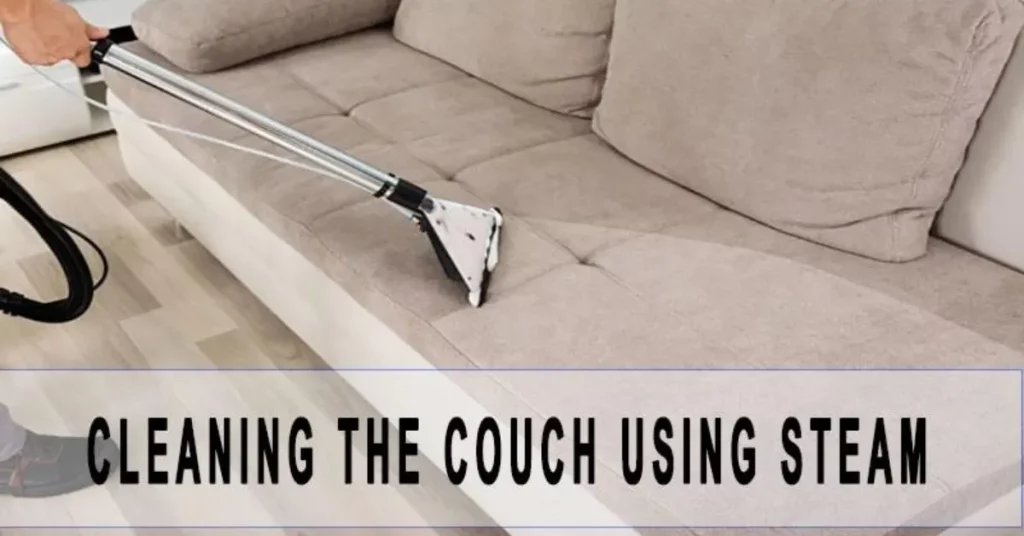
Now comes the most efficient step of all, deep cleaning the couch using steam. Well, you got to know one thing here, even though this will take quite a lot of effort to get this step done.
Once you complete this, the beauty of your couch will be at its peak, and it will be like you have just taken it home from the shop. Also, it helps clear off any bacteria residing or smells developed on the surface over time.
Moreover, the steaming process is a lot easier and quicker than the manual one, which is why we have chosen this here. It’s not as hard to force you to call a professional, so it’s economical too.
First off, I will make a list of the things you are going to need so you can do the work easily without needing to get things again and again.
The things you will need throughout this process are:
- A clean, dry cloth
- Steam Cleaner (with water in it)
- Vacuum Cleaner
- Soapy water
- Sponge
Vacuum
First of all, you need to use the vacuum cleaner and get rid of all the trivial dirt on the couch, it’s not necessary, but it will make your work a lot easier. The dry dirt becomes an issue when you use steam as it possibly forms a muddy surface on the couch. Make sure you get fully to the corners and take off any pillow or anything from the couch.
Clean What Vacuum Cannot.
There are many parts of a couch where the vacuum cannot reach, so you will have to do it manually, change the orientation of the couch and check if there is any dirt below the couch where its skeleton is. There are often pieces of food accumulated there.
Get the light stains.
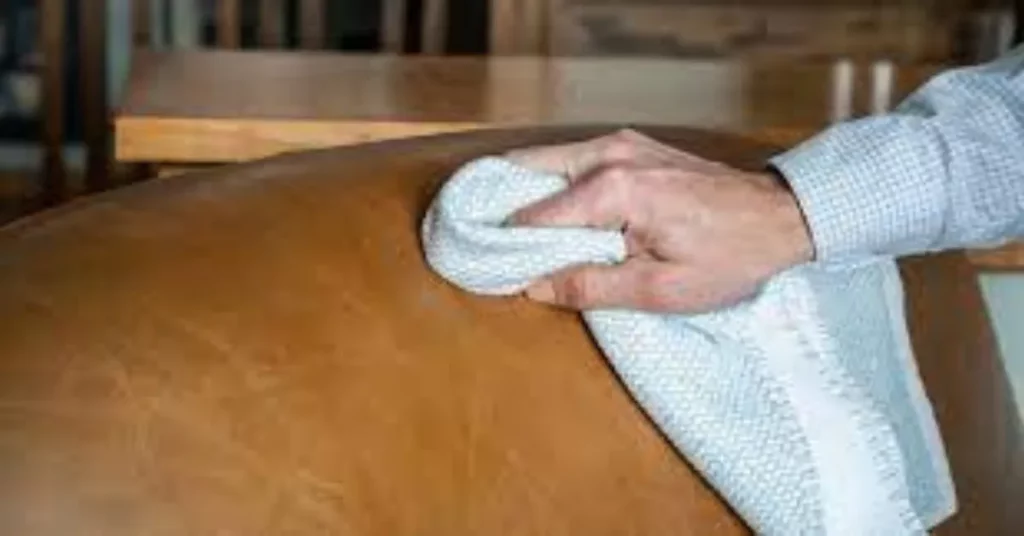
Using the soapy water, sponge the couch in the places where there are soft stains and can be cleaned off easily. We will only use the steaming process on where it’s actually needed. Make sure you rub enough on the stains to get them off. This step is very important as it keeps the light stains from possibly spreading outwards.
Start Steaming the Cushions
Now comes the steaming part; after getting the steamer ready and reaching the appropriate temperature, you need to start applying it onto the cushions. I would suggest you use a round brush to deal with the cushions.
An important thing to note here is that not all cushions come with the same heat capacity, and some can be ruined if your steamer is too hot. So, check first how much heat your cushions can withstand and proceed according to that.
Cushions have different textures of styles, which also need to be taken into account. If you also have fancy cushions, make sure they don’t have any laces or other kinds of materials on them, which can possibly be damaged by heat. If they do, manage them accordingly and turn down the heat settings of the steamer.
Steam the Backrest
The next thing to steam is the backrest. This is the part which will probably have the oiliest patches or bacteria since the hair of a lot of different people touch this.
Steam the area once it’s heated up to an appropriate level, and for the spots which are more stain, you might have to steam them more than once. However, make sure that after a single go of steaming an area, you take a break before doing it again. When the stains disappear, you’re ready to move forward.
Get the Sides and Back
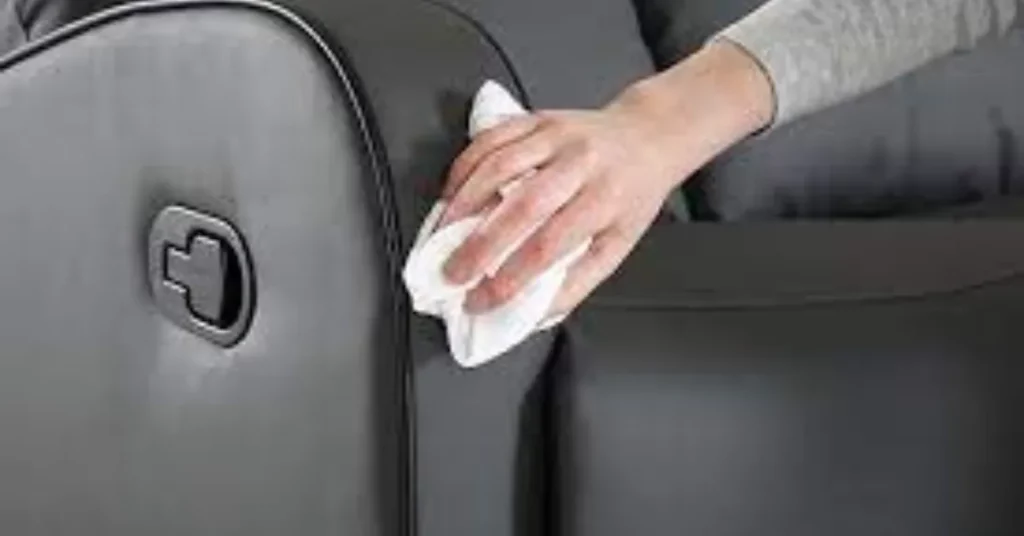
Last but not least, sides and the back parts of a couch are also important to pay attention to as they are also quite prone to catching grime. Get to the sides first before you take on the back area. You might want to use a dry cloth to soak up the residue, which will come off as a result of the steaming process.
Just like the previous step, there might be some hard stains for which you would need to go over the process 2 to 3 times to get satisfactory results.
Leave the Couch untouched for some time.
After you are done with all the above-given steps, your couch needs to have some time alone to make sure it is completely dried off from the stains. Using the couch before it dries could make it catch stains very fast, wasting all your effort. So, make sure you give it enough time to dry off.
Conclusion
Although sectional couches and sofas are essential parts of any sitting area, they are quite prone to catching grime and dirt from time to time and need regular cleaning. We have seen different ways to clean a sectional couch throughout this article with enough explanation for you to follow. However, if you don’t have enough time for equipment, you can also call the professional to get the job done for you.

